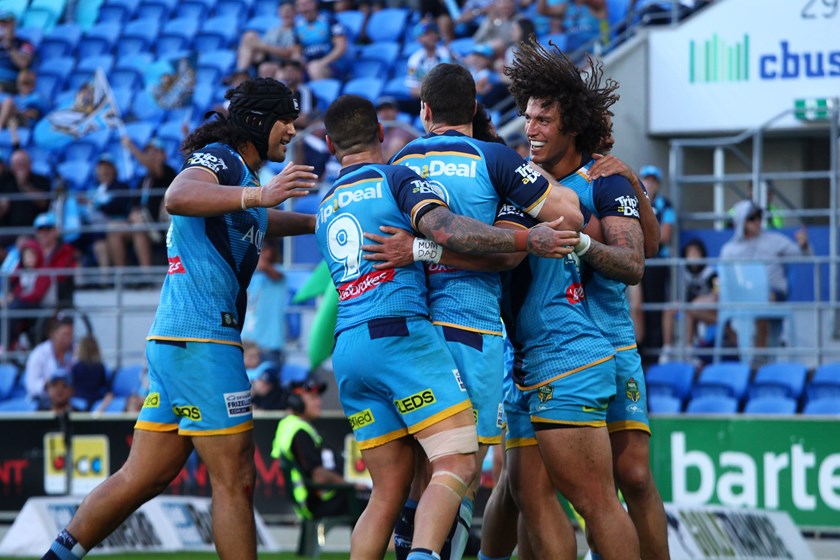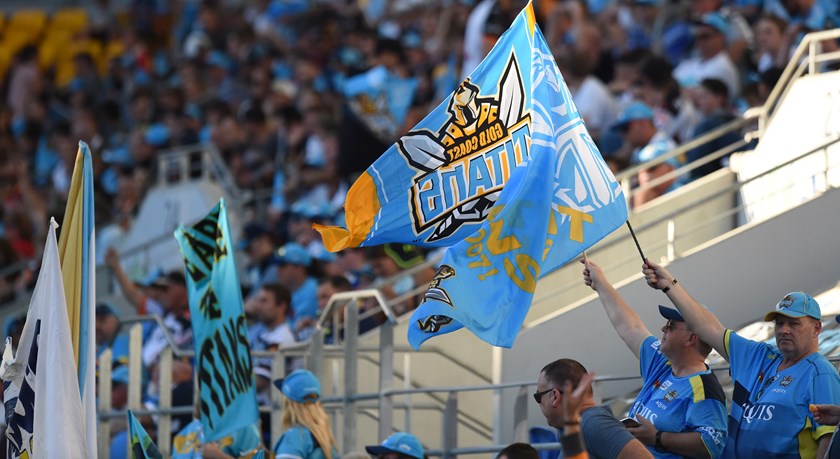The Gold Coast-NSW Northern Rivers area is necessary for rugby league. It is a vital corridor for our sport.
An NRL club needs to play out of this region because it's such a strong rugby league fraternity and boasts a proud history.
The AFL is pushing hard in this area and soccer's popularity continues to rise.
It hasn't worked here before but the Titans are hell-bent on making sure it works this time.
How do we achieve that? Basically we first have to make the club a sustainable success.
You do that by providing better development programs and doing really good community work. That has already started - the players' work in the community has been exceptional, the best in the competition I'd hazard a guess.
So strong efforts in these two key areas are vital. The Titans want to become known as a strong development club on the back of that strong community spirit.
History tells that a lot of successful and well-known players come out of this region. And it goes way back to 1914 with Frank Burke – yes, the man who had the western grandstand at the old Lang Park named after him in 1962 – moving a motion to introduce rugby league into the Tweed River region. It passed and the handful of rugby union clubs became rugby league clubs.

So he was instrumental in getting rugby league established here on the Gold Coast-Tweed area. Burke sat on the Tweed Heads Seagulls board and later became president of the QRL.
In the 1950s the Tweed Heads Seagulls signed Barry Muir as player. He went on to play 22 Tests for Australia and after he finished, he ended up coaching the Queensland team (1974-78).
From all that became a multitude of success for teams and players out of this area in regional, national and even international arenas. The French and New Zealand teams played tour matches here.
In the 1930s the Chinderah All Blacks was one of the Tweed regional teams that used to tour regularly down south playing the St George Dragons for about 10 years – and from that concept the Redfern All Blacks rugby league club was formed in 1944 as a result of those visits.
A lot of the people involved in the clubs throughout the NSW northern rivers and Gold Coast areas played rugby league in winter and were surf life saving officials and competitors in summer. Immediately the community bond was formed and that is what the Titans are forging ahead with now.
I haven't got the exact figures of how many players from the region – Grafton, north to Lismore, Casino, Murwillumbah, Tweed Heads and the Gold Coast - are playing at other NRL clubs but it would be quite a few.
I don't have the precise reasons why elite first grade teams haven't succeeded here in the past – the Tweed Heads Giants, reverting back to the Tweed Heads Seagulls, the Gold Coast Chargers – although the Seagulls have had great success in lower grades and competitions and are the Intrust Super Cup feeder club for the NRL Titans, formed in 2007.

It is because of the passionate and hard-working people here that I agreed in November last year to become head of performance and culture at the Titans.
Hopefully what I can bring, alongside the others, is a feeling of self-belief in knowing who we are and who we represent. We want to be unique, a bit different, not necessarily follow other clubs and what they've done.
We intend to blaze a trail moving forward. The owners here – Darryl Kelly and Rebecca Frizelle – are really good people and have made big investments in this club. They believe the Gold Coast community deserves the Titans, who can then give back to the community.
The desire is here, despite the fact three NRL finals appearances in 13 years isn't a glowing endorsement to support us.
But to have strong beliefs, to have a resilient development plan, to be proud of our community work, getting it right in the front office and results on the field, who knows what can happen.
It looks like you may be using adblocking software to view this site.
Many features on the site, such as video playback, may not work properly when using adblocking software.
Please whitelist our domain or disable your adblocker to access all features and videos.
Meninga insists Titans role won't involve coaching


